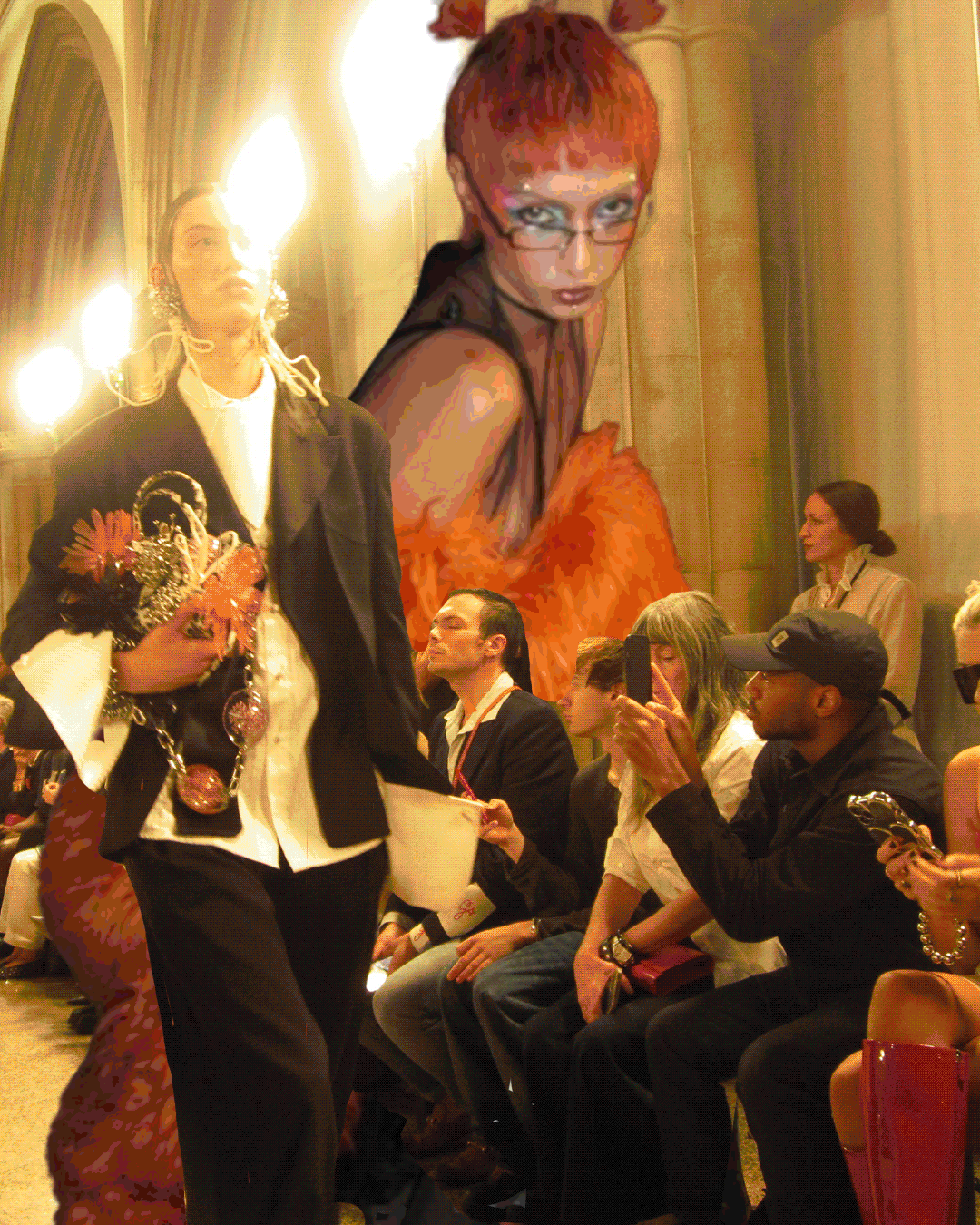Sales of Sebastian Hair-Care Line Turn Heads
- Share via
The wet head is no longer dead.
And Sebastian International, a Woodland Hills-based hair-care company whose best-selling products are called Shpritz, Shpritz Forte and, of course, Wet, is capitalizing on the trend. The company has become a hair-care leader by touting its products as a necessity for a certain contemporary look in hair styles.
“They’re hot, probably the hottest in the business,” said Mary Atherton, editor of Modern Salon, a trade magazine that carries advertising from the company. “Sebastian’s a growing, mainstream company with an avant-garde image.”
Sebastian International has brought attention to itself by arranging glitzy fashion shows and by styling models’ hair. The intent is to make consumers think of Sebastian International’s shampoos, conditioners and styling aids when they see dresses by trendy designers such as Enrico Coveri, Karl Lagerfeld and Issey Miyake.
Hairdos in Spotlight
The company’s fashion shows spotlight hairdos--both wet and just spiky--that call for its products. The hair styles include the “neo-geo,” which, according to a Sebastian International brochure, has “charming peaks and points that readily adapt to your mood.”
Another hairdo, the “moppet,” looks just like it sounds, and the “flick” stands up the way anyone’s might after an uneasy night’s sleep.
Sebastian International doesn’t savor all of the attention it receives, however. The company has gone to court several times to try to head off competitors that it says are copying its products, as well as stores charged with selling its products without authorization.
Partly to get out from under the shadow of its larger rivals, Sebastian International tries to sell all its products worldwide in affiliated beauty salons that often display the company’s name in their windows.
John Sebastian, 46, president of the 13-year-old company, said he prefers that approach because it keeps his products from being lost in the crowd of hair-care goods in many stores and because hairdressers are persuasive salespeople. Salon workers get tips in pitching products and in haircutting at the company’s Woodland Hills headquarters or through videotapes available in six languages.
Offers Seminars at Cost
For Sebastian International, training is a vital part of winning over a loyal sales force. The company says it offers the seminars at cost to stylists to help them feel like part of a “high-flying, high-fashion” world.
The privately held company does not disclose its financial results. It claims, however, to have grown at an annual rate of 75% for the last three years.
Sebastian International has marketing personnel in Woodland Hills and in such cities as Paris, Tokyo, Milan, Geneva, Rome and Montreal. It employs more than 400 people, including 100 at its headquarters and another 150 at a packaging plant in Chatsworth.
Atherton says Sebastian International has become a formidable force in the hair-care marketplace but still trails far behind such giants as Helene Curtis Industries of Chicago and Clairol, a subsidiary of Bristol-Myers. It also is believed to be much smaller than Canoga Park-based Redken, which had sales last year of $109 million and is said to be the largest among those that sell hair-care products exclusively in beauty salons.
Avoids the Wet Look
With his curly hair and a gray-flecked beard, Sebastian does not go for the wet look himself, instead making his fashion statements with expensive suits. He was born John Sebastian Cusenza, but stopped using his last name professionally when he and his brother, Tony Cusenza, 43, started Sebastian International in 1973.
The Cusenza family arrived in the United States from Tunisia 32 years ago. In 1960, the two brothers started a Los Angeles beauty school that eventually grew to a chain of six. Ten years later, they sold the chain and concentrated on introducing a curling iron.
In 1976, the brothers--Tony Cusenza is a vice president--diversified the business, introducing a hair-color line still on the market called Cellophanes. A couple of years later, the company began selling shampoos and cosmetics such as foundation, eyeliner and mascara.
But the products that securely established the company were the wet-look team of Shpritz, Shpritz Forte and Wet, Sebastian said.
He said the look already was popular in fashion circles when the company developed the products, but he maintained that they hold hair better and are less sticky than the competition’s. Sebastian attributes the products’ success largely to their unusual names, but he also said the company was ready with the right product at the right time.
Begins With Hair Styles
The company says its biggest challenge stems from the time it takes to develop a product. The process starts with company designers who invent hair styles and then dream up products to hold them in place.
Chemists eventually devise the actual solutions, which are tested at a Tarzana salon called Cassandre 2000, which just happens to be owned by Geri Cusenza, John Sebastian’s wife.
“We have to guess what people will want several seasons from now,” Sebastian said. “It’s a high-risk business. We could think short and wet and then everyone else goes with long and dry. I have nightmares about this.”
The company aims to help set the styles, though, in part through its fashion shows, which are coordinated with fashion introductions in Europe and with garment-industry conventions in the United States.
Sebastian International puts on 80 shows a year, and they apparently are more extravagant than most. “Everyone puts on shows,” said Modern Salon’s Atherton. “But Sebastian’s shows are typically for standing-room-only or sellout crowds.”
The company advertises heavily in trade magazines for salon owners such as American Hairdresser and Modern Salon. It also buys ads in fashion-oriented women’s magazines such as Vogue, Mademoiselle, Glamour and Elle.
Nevertheless, Sebastian said, he has no plans to sell his company’s products anywhere but salons, although other hair-care products have successfully gone that route.
Prices Relatively High
Among the attractions of marketing through salons are the relatively high prices they can charge. The company says an eight-ounce bottle of Shpritz Forte usually retails for at least $6; a package of 12 three-quarter-ounce packets of conditioner sell for $24.
Analysts see merit in Sebastian International’s reliance on salons as sales outlets.
“After you’ve spent 30 bucks on a haircut, another five for a bottle of shampoo doesn’t seem like much,” explained Charles Crane, a cosmetics industry analyst for Oppenheimer & Co. in New York. “If you like the way your hair looks, you’ll try to keep it that way.”
Jeffrey Ashenberg, an analyst for L. F. Rothschild, Unterberg, Towbin, another New York brokerage firm, said some products lose their allure when they are sold in department stores.
Sebastian International’s strategy notwithstanding, some of its products--or close copies--have shown up on the shelves of discount stores without authorization. The company suspects that some salon owners and distributors are to blame.
To combat that problem and the sale of copies of the company’s products, Sebastian International has frequently gone to court. For example, Sebastian International has a lawsuit pending against Smart Line Generics of Beverly Hills for selling products labeled “exact generic versions” of Shpritz, Shpritz Forte and Wet. John Kuchinski, Sebastian International’s lawyer, said Smart Line’s use of the Sebastian International logo is a trademark infringement.
The Smart Line products have similar ingredients and carry a disclaimer saying they are not Sebastian International products. Smart Line, which has accused Sebastian International of harassment, says it is within its legal rights to copy the products and label the copies generic equivalents of Sebastian International’s goods.
“We’re just giving the customer a break on prices,” said Dick Evans, Smart Line’s manager. “We don’t have all the advertising and promotional costs they do.”
More to Read
Inside the business of entertainment
The Wide Shot brings you news, analysis and insights on everything from streaming wars to production — and what it all means for the future.
You may occasionally receive promotional content from the Los Angeles Times.










